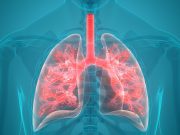Tag: Survival
Childhood Cancer Survivors Often Not Adherent to Surveillance Tests
Only 13, 6, 53 percent of survivors at increased risk for CRC, breast cancer, cardiomyopathy adherent to surveillance
ASA: Stroke Survivors Face Twofold Higher Risk for MI One Year After Stroke
Findings seen with or without cervical artery dissection
Specific Plant Foods Reduce Premature Aging in Childhood Cancer Survivors
Dark green vegetables and nuts/seeds intake linked to lower risk for premature aging in childhood cancer survivors
10-Year Lung Cancer-Specific Survival for Low-Dose CT Persists
10-year lung cancer-specific survival of 80 percent reported in 2006 persisted, with 81 percent survival at 20 years
Risk for Chronic Health Conditions Increased for Young LGB Cancer Survivors
LGB survivors have increased risk compared with LGB individuals without cancer history, heterosexual cancer survivors
Poor Physical Function Persists in Childhood Cancer Survivors
Findings seen for patients diagnosed with acute lymphoblastic leukemia and non-Hodgkin lymphoma from the 1970s through the 1990s
Impact of Cancer Predisposing Variants on Mortality Examined in Survivors
Carrying cancer predisposing genes linked to increased risk for subsequent malignant-related mortality in childhood cancer survivors
Long-Term, Real-World Survival Excellent for Surgical Aortic Valve Replacement
In a recent study, survival was 92.9 percent at five years
2008 to 2020 Saw Increase in Survival for Advanced Prostate Cancer
Shift in survival occurred during introduction of doublet therapy
Cardiac Arrest Survival Lower at EMS Agencies Serving Minority Populations
Difference not explained by response times, rates of EMS termination of resuscitation, or rates of initiating CPR or automated external defibrillator














